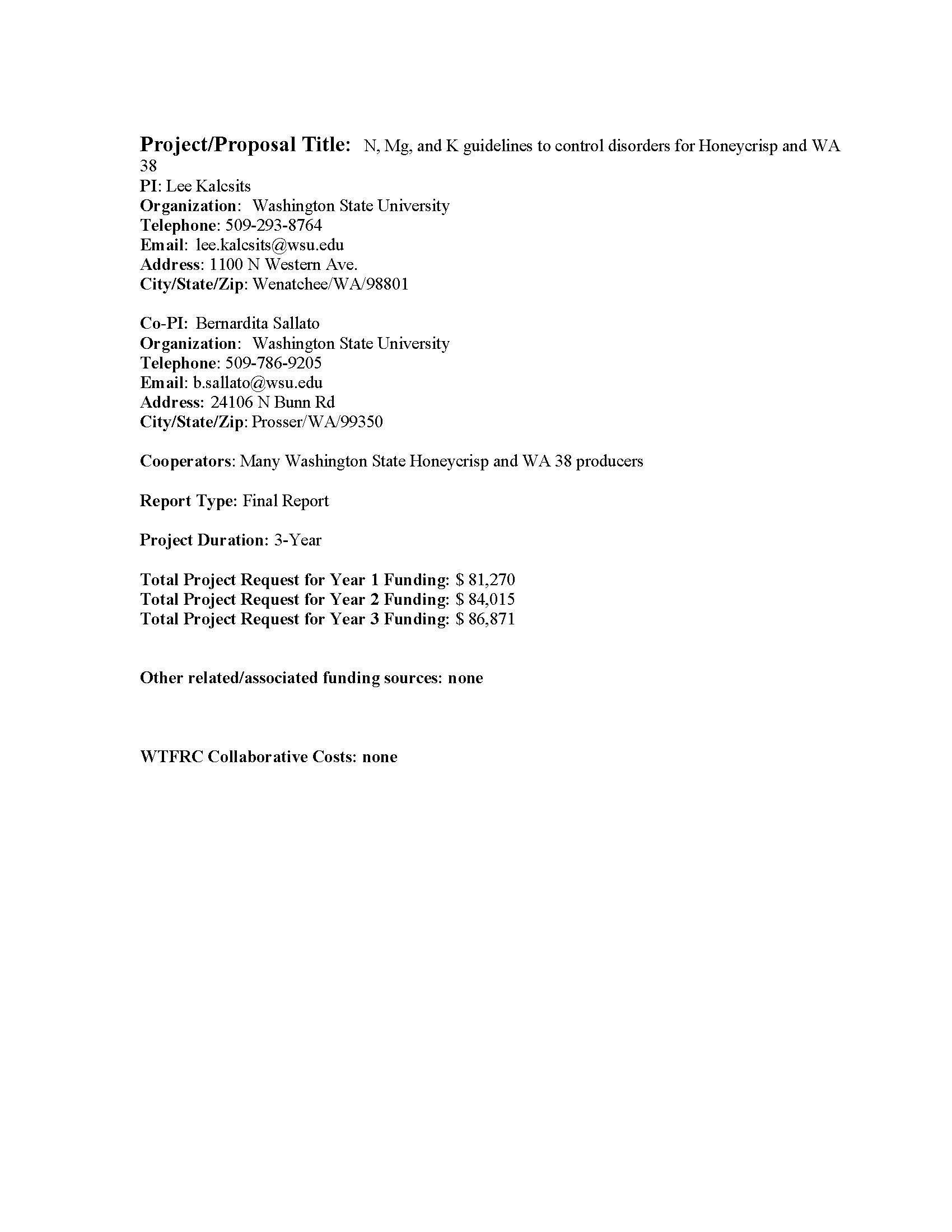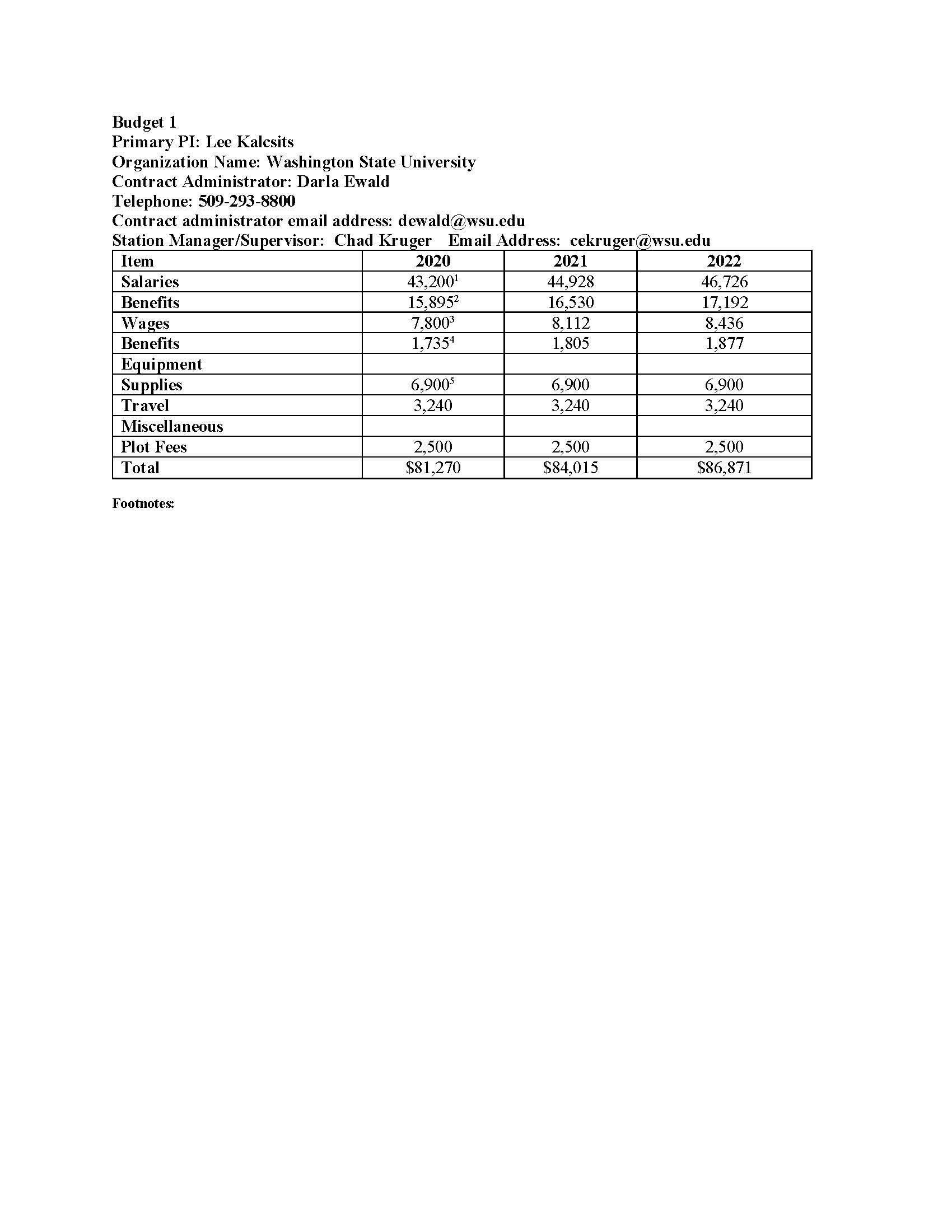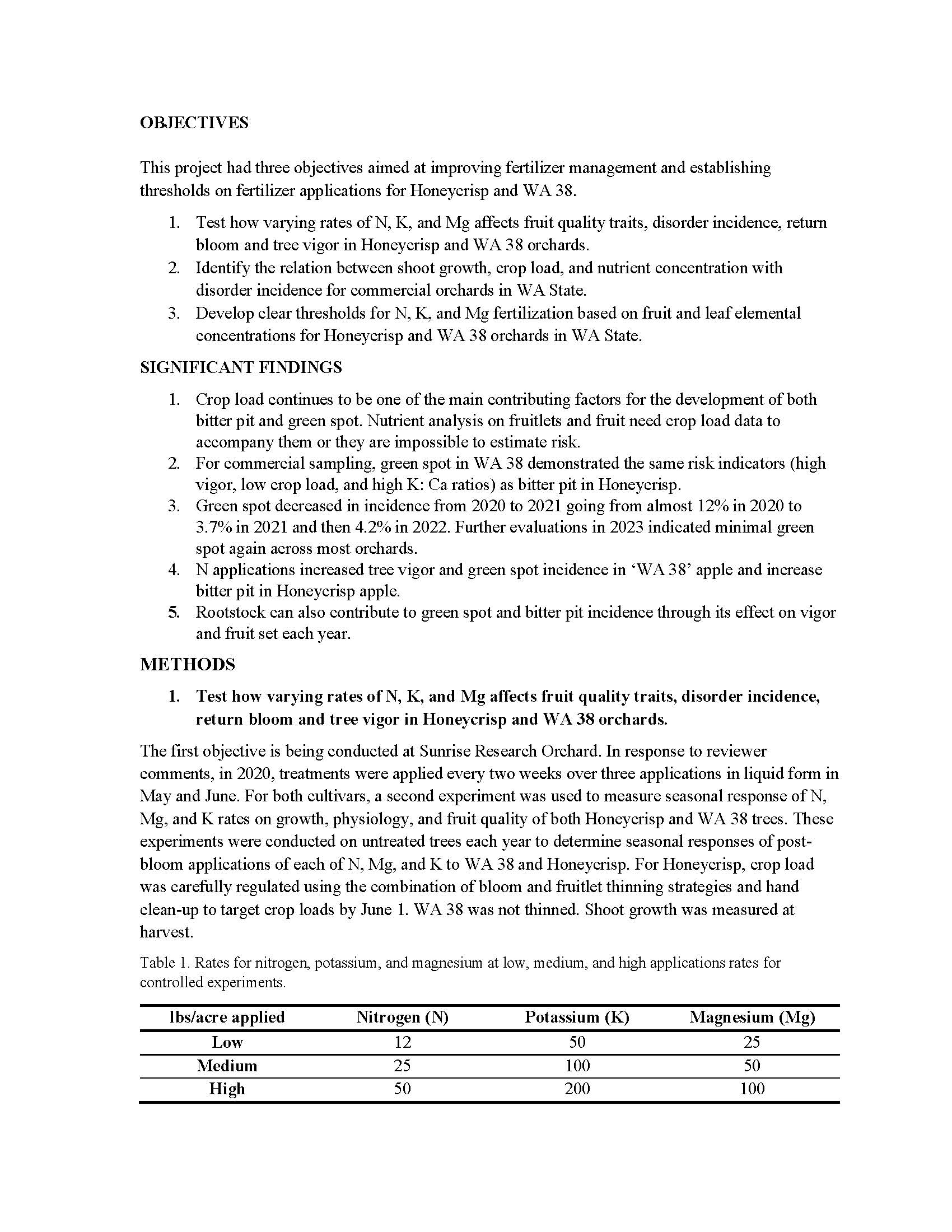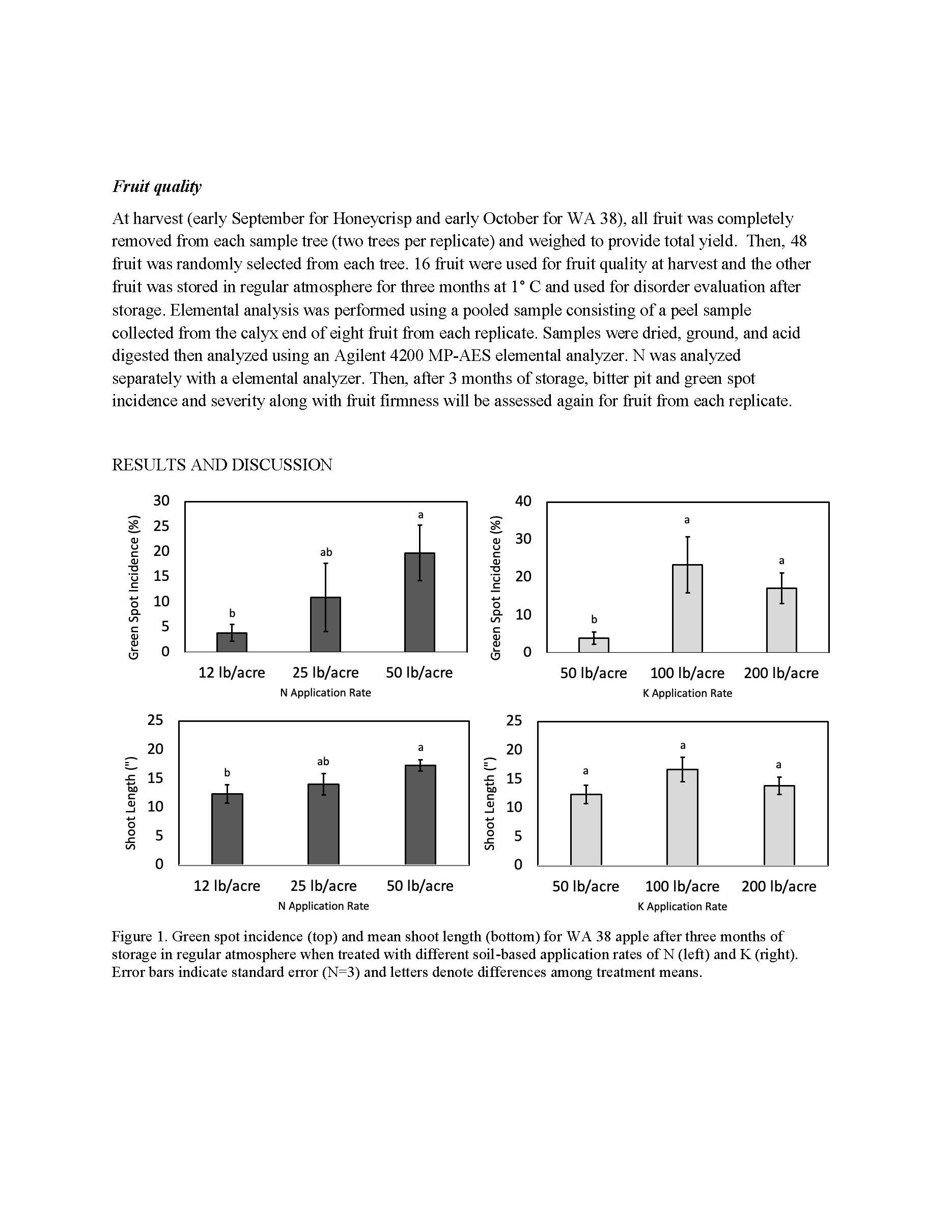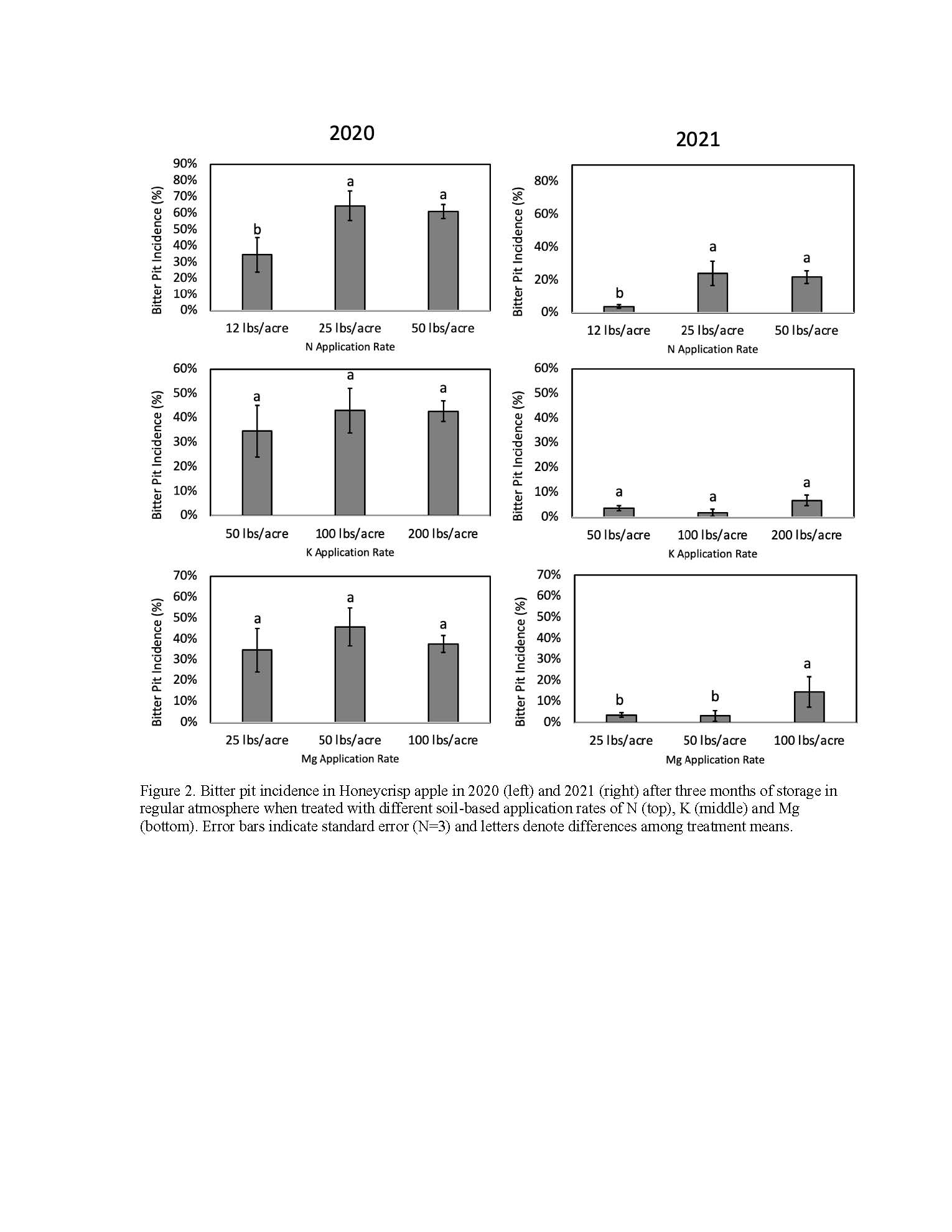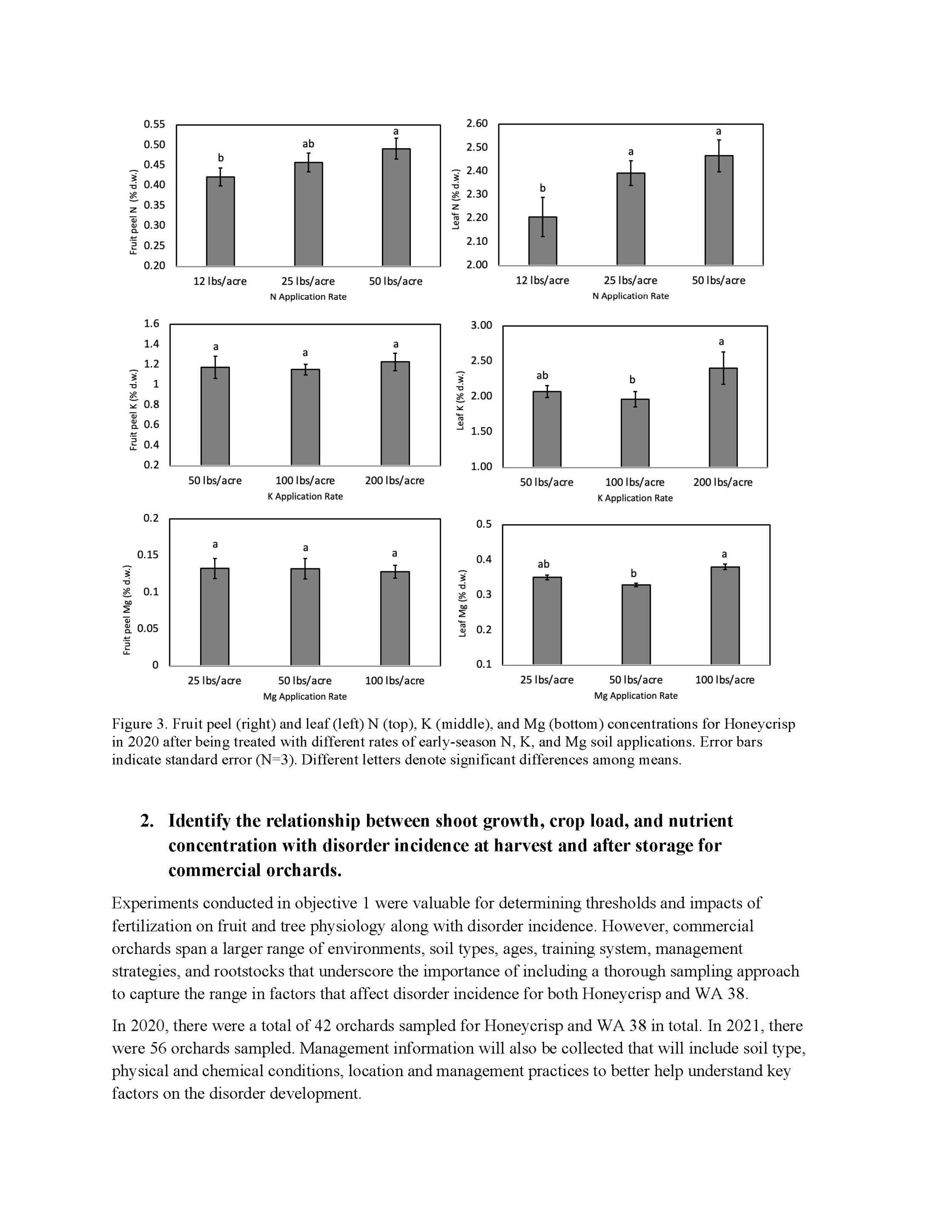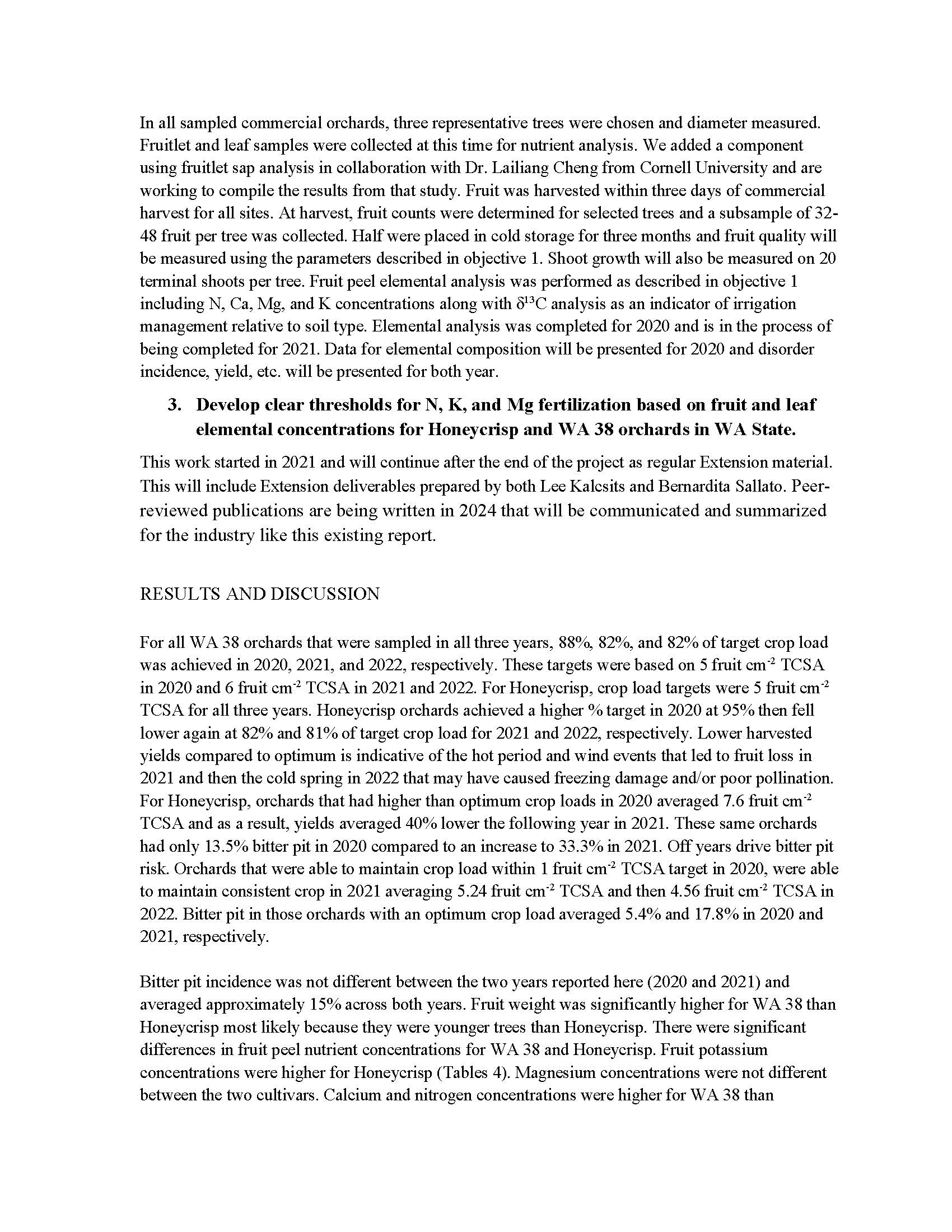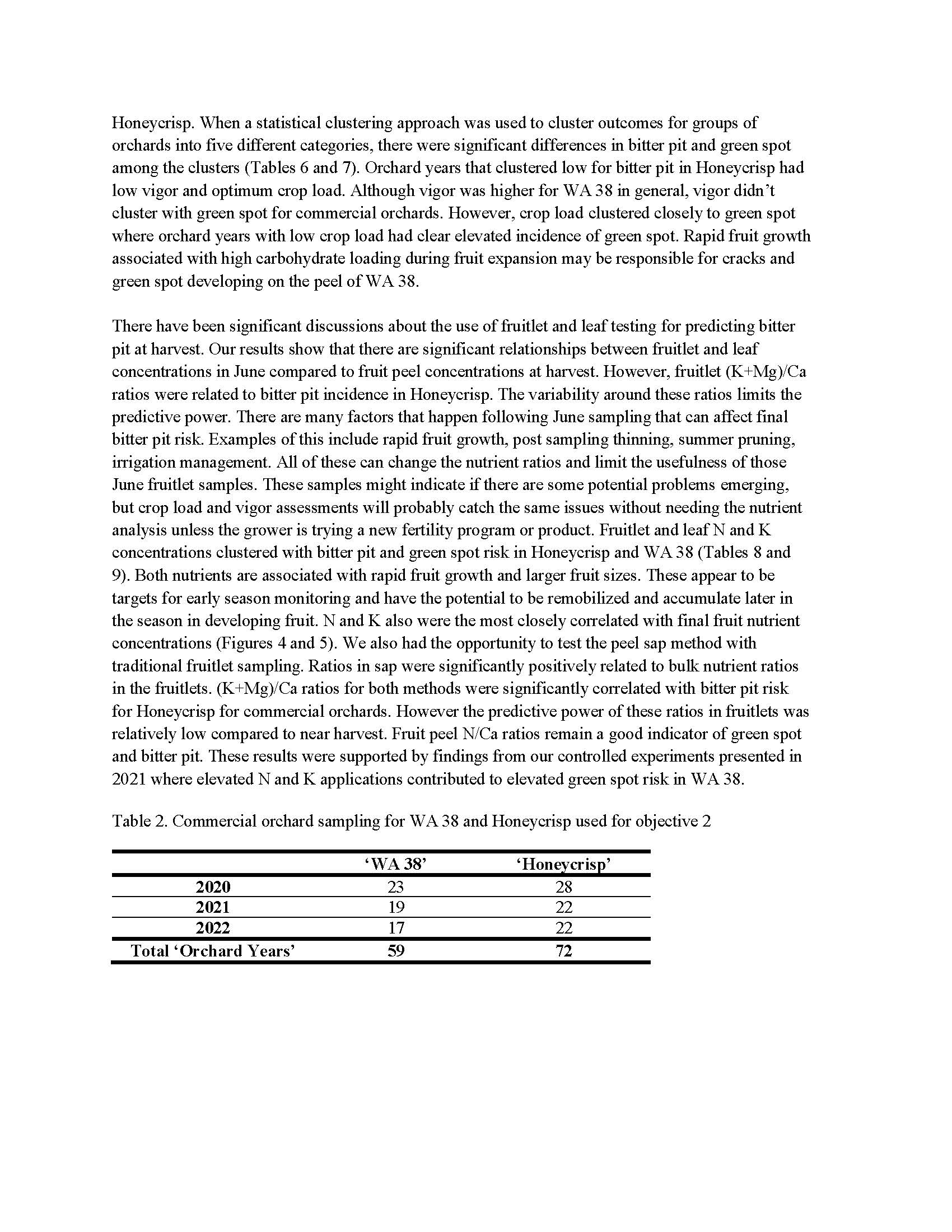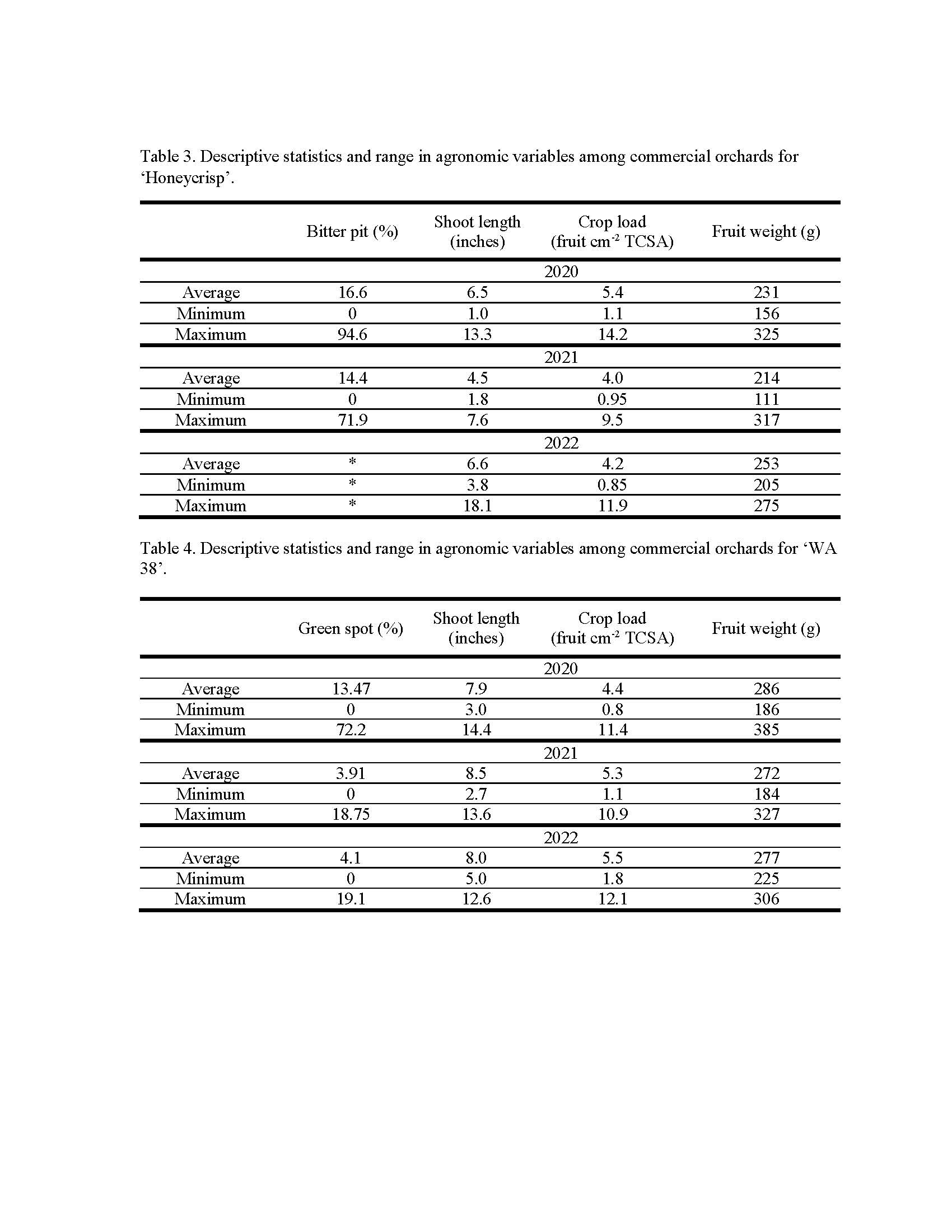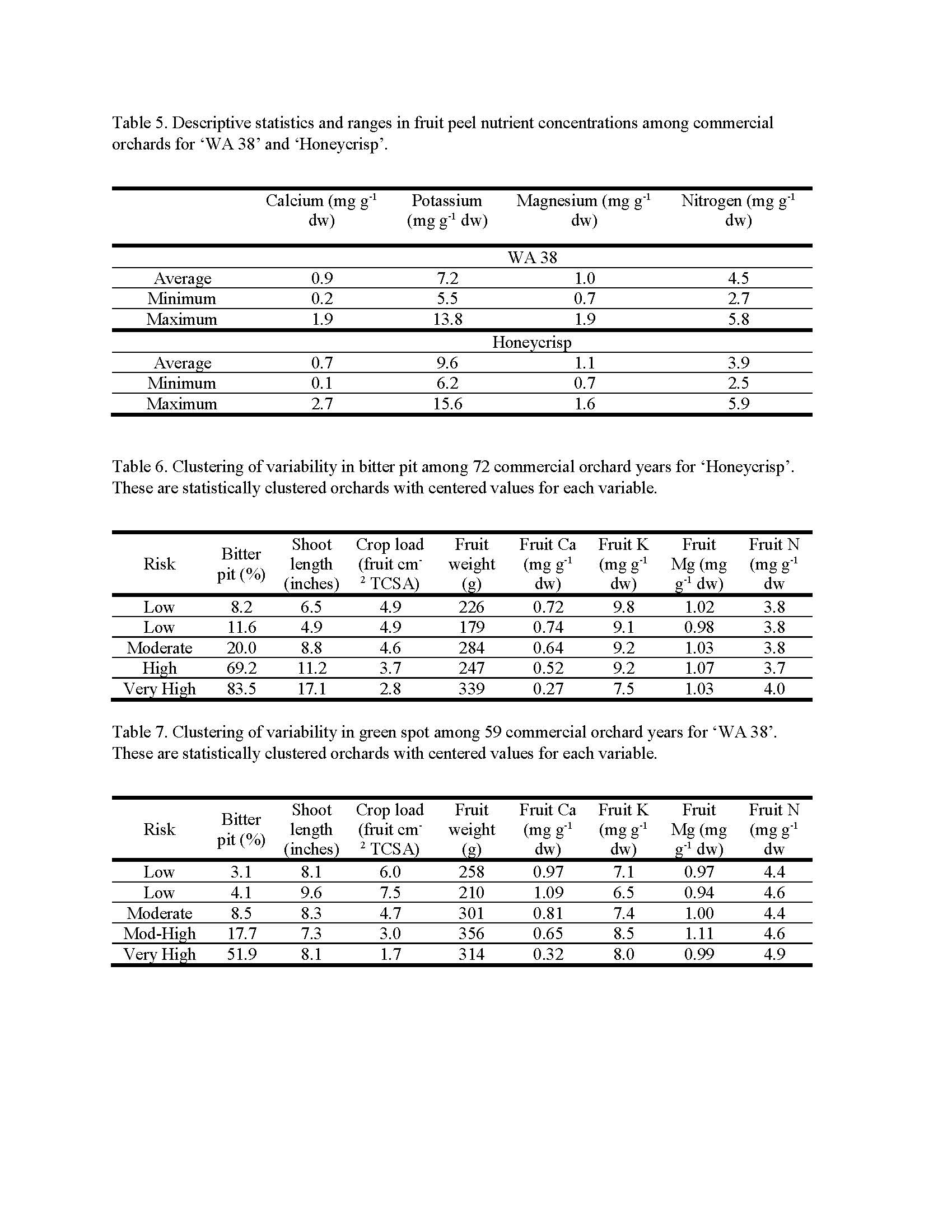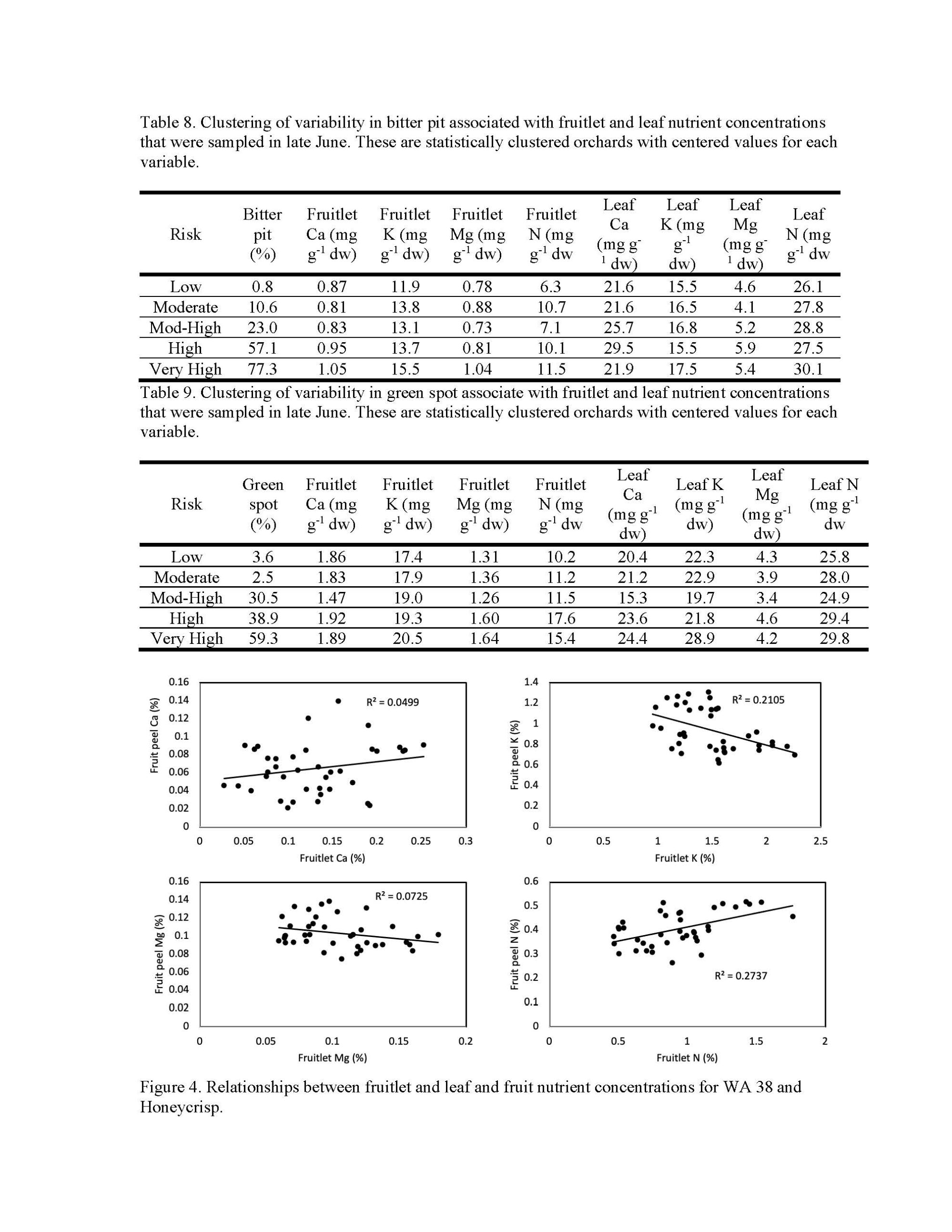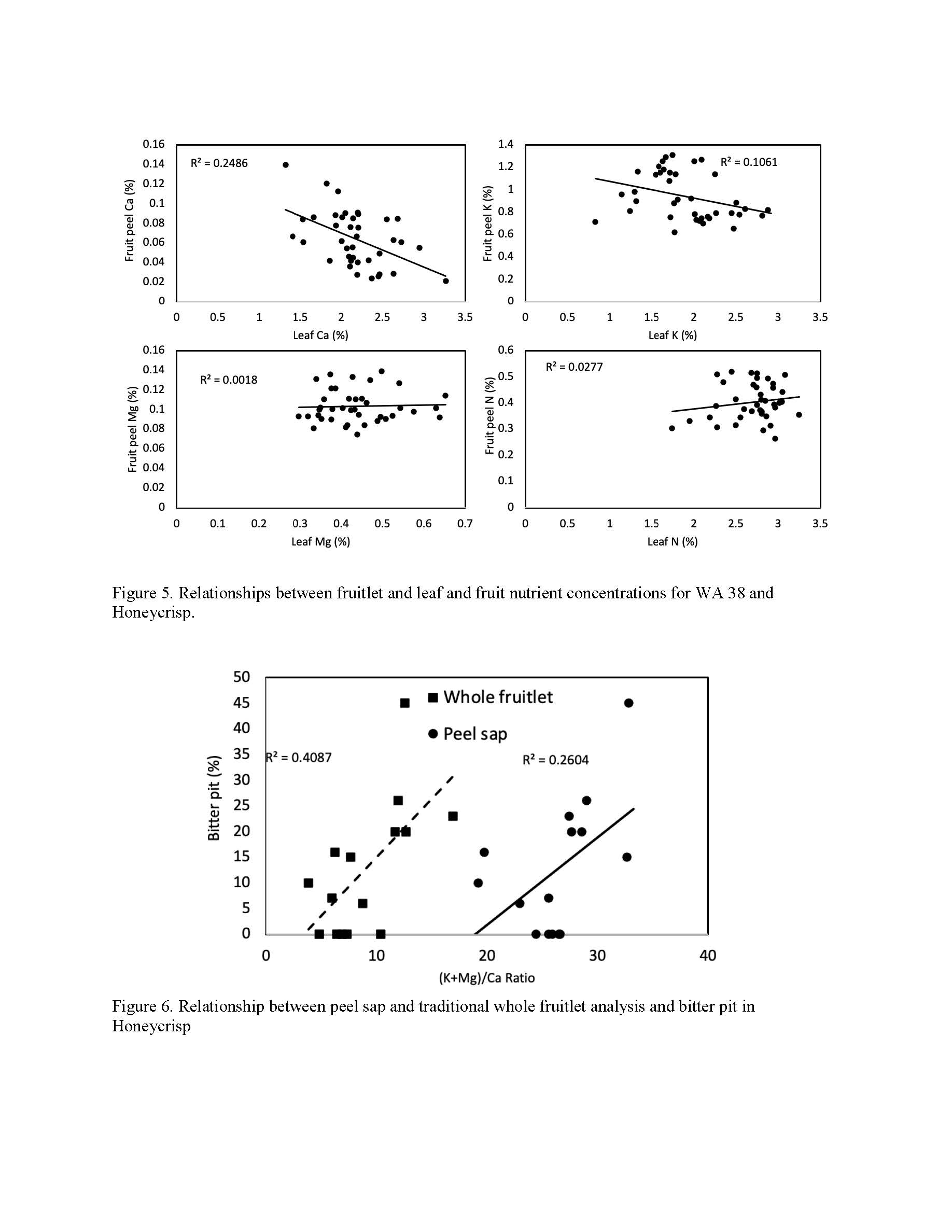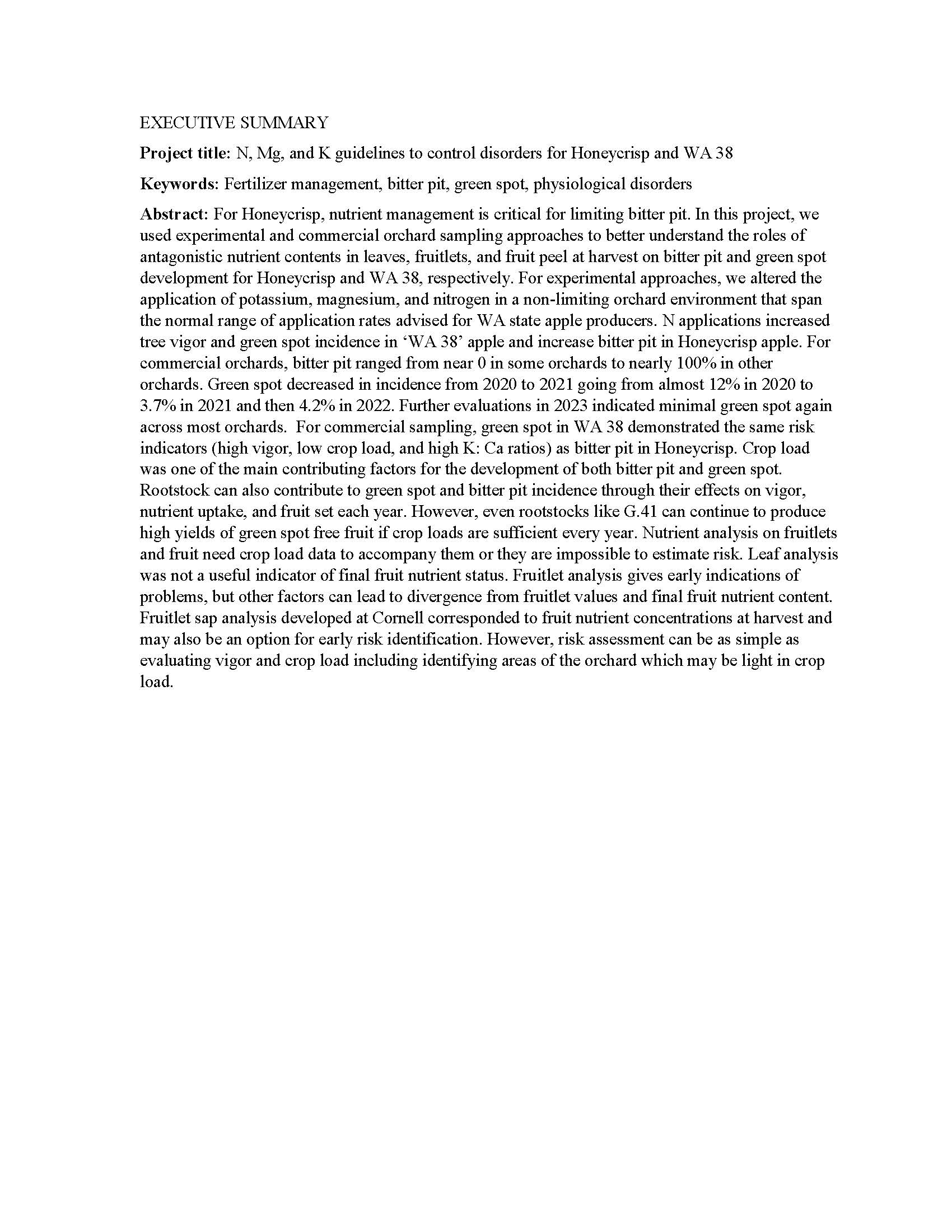N, Mg, and K guidelines to control disorders for Honeycrisp and WA 38
Author: Lee Kalcsits
Published: 2024
Summary: For Honeycrisp, nutrient management is critical for limiting bitter pit. In this project, we used experimental and commercial orchard sampling approaches to better understand the roles of antagonistic nutrient contents in leaves, fruitlets, and fruit peel at harvest on bitter pit and green spot development for Honeycrisp and WA 38, respectively. For experimental approaches, we altered the application of potassium, magnesium, and nitrogen in a non-limiting orchard environment that span the normal range of application rates advised for WA state apple producers. N applications increased tree vigor and green spot incidence in ‘WA 38’ apple and increase bitter pit in Honeycrisp apple. For commercial orchards, bitter pit ranged from near 0 in some orchards to nearly 100% in other orchards. Green spot decreased in incidence from 2020 to 2021 going from almost 12% in 2020 to 3.7% in 2021 and then 4.2% in 2022. Further evaluations in 2023 indicated minimal green spot again across most orchards. For commercial sampling, green spot in WA 38 demonstrated the same risk indicators (high vigor, low crop load, and high K: Ca ratios) as bitter pit in Honeycrisp. Crop load was one of the main contributing factors for the development of both bitter pit and green spot. Rootstock can also contribute to green spot and bitter pit incidence through their effects on vigor, nutrient uptake, and fruit set each year. However, even rootstocks like G.41 can continue to produce high yields of green spot free fruit if crop loads are sufficient every year. Nutrient analysis on fruitlets and fruit need crop load data to accompany them or they are impossible to estimate risk. Leaf analysis was not a useful indicator of final fruit nutrient status. Fruitlet analysis gives early indications of problems, but other factors can lead to divergence from fruitlet values and final fruit nutrient content. Fruitlet sap analysis developed at Cornell corresponded to fruit nutrient concentrations at harvest and may also be an option for early risk identification. However, risk assessment can be as simple as evaluating vigor and crop load including identifying areas of the orchard which may be light in crop load. Keywords: Fertilizer management, bitter pit, green spot, physiological disorders
Keywords:

